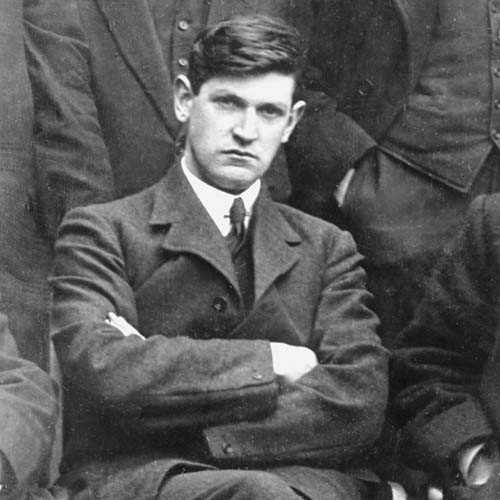Irish Civil War
The Irish Civil War followed the Irish War of Independence. The latter was fought against the British State by the Irish Republican Volunteers (Irish Republican Army – IRA) between January 1919 and July 1921. The Anglo-Irish Treaty was subsequently signed in London on 6 December 1921. The Treaty allowed for the establishment of the Irish Free State, an entity consisting of 26 of the 32 counties of Ireland.
Although independent from the United Kingdom, the Irish Free State was required, under the terms of the Anglo-Irish Treaty, to remain within the British Empire. This was repugnant to many Irish nationalists. They considered the Treaty a retrograde step as it dissolved the Irish Republic, which had been declared in 1918. In contrast, others saw the Treaty as a stepping-stone towards full Irish independence.
In January 1922 the Dáil narrowly passed the Treaty, by 64 votes in favour to 57 against. This led to a split in the IRA. Arthur Griffith and guerrilla leader Michael Collins, two of the Treaty signatories, participated in the newly established Provisional Government. It oversaw the transfer of power from the British to the new Irish state. Those Republicans who formed the anti-treaty faction were led by Eamon de Valera and were sometimes known as the Irregulars.
Following a stand-off period, hostilities between the pro and anti-treaty factions finally erupted in June 1922. The Provisional Government launched an attack upon the Four Courts in Dublin, which was held by anti-treaty forces. Michael Collins was appointed commander-in-chief of the Free State Army, while Republicans adopted guerrilla tactics throughout the country.
Having initially secured Dublin, the pro-Treaty forces took Cork and Kerry in July and August by means of a number of landings by sea. August 1922 was a particularly traumatic month. Arthur Griffith, President of the Provisional Government died suddenly on 12 August. Ten days later, on 22 August, Michael Collins was killed by Republicans, in an ambush at Béal na Bláth, Co. Cork.
Over the following months the anti-treaty forces waged a guerrilla campaign, while the pro-treaty government introduced a policy of internment and execution. County Kerry became the Republicans’ last stand. Here the government forces known as the ‘Dublin Guard’ were responsible for much of the violence and brutality experienced within the county.
You can read a brief account of the Civil War in County Kerry here.
Publications produced by both the pro-treaty (Weekly Irish Bulletin) and anti-treaty (Daily Bulletin) parties are available to read below.


